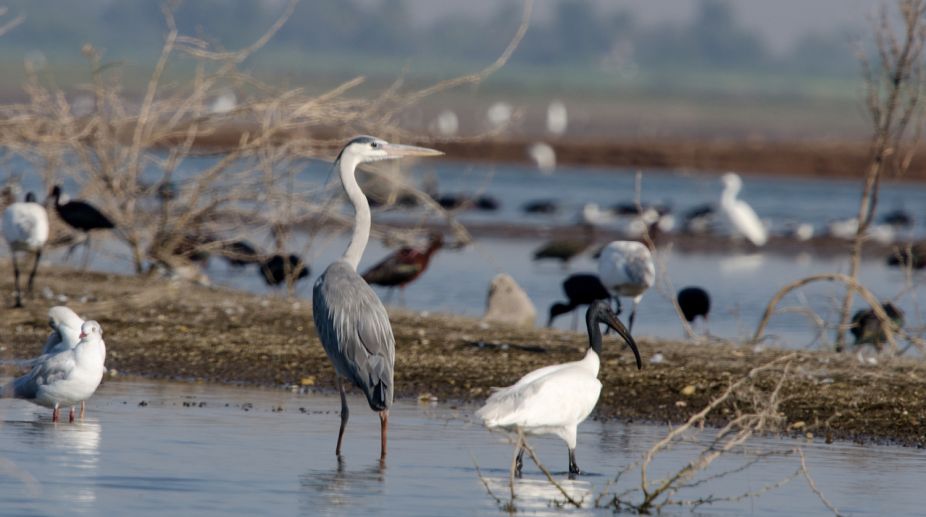Last week, I watched a number of breeding grey herons gathering thorny twigs to reinforce their stick-nests and though I have often before seen water-birds (including herons) doing this, I noticed something I had missed earlier.
The birds were nesting in a mixed heronry, and though several herons had their nests on the same trees, they were by no means breeding in an exclusive colony — many other waterbirds also nested in those trees. Nor did the herons go out to feed and return in parties, as the cormorants, spoonbills, openbills, and white ibises did. But in their quest for twigs they kept together, and went to trees and bushes, which seemed exclusively theirs.
In two hours of watching, I did not see any other bird going to those trees and bushes to gather twigs along with the herons — the herons were flying out to the site, about two furlongs from the breeding colony, in small parties of from two to six, and returning with the nesting material singly or in small parties. All the time I watched I took up my stance about midway between the breeding colony and the patch of scrub they visited, at first I tried getting closer to the twigcollectors but retreated as this frightened them.
A safe role with most birds is that if you can see them, you may take it that they have already seen you, unless you are hidden. All the same, I made myself as uncomfortably inconspicuous as possible, behind a thorn bush and beneath a thorny tree. From his position I could not get a clear view of the twig-gathering birds, they were due east of me and the early morning sun was in my eye, and, moreover they were too far away and obscured by the intervening vegetation.
However, by standing tiptoe I did get a few furtive glimpses of their activity through a picket telescope, and noticed that while some of them collected fallen material from the ground, the majority actively tugged at dry branches from trees and bushes, and got their nesting material that way. The material they were gathering so industriously was dry, slender, leaf-free twigs of various thorny plants, among them species of Randia,Carissa,Atlantia monophylla,and acacias.
Most of the twigs were from about a foot in length to two feet usually with a few lateral branchlets but sometimes a branchlet fully a yard long was collected and carried trailing gracefully from the beak below the body as the heron flew back to its nest on unburied, ample wings. Watching the flying herons, I realised once again how deceptive their lazy-seeming wing action was. The Little Egret alone I think is more graceful in flight than a heron, and both are capable of dexterous speed and twisting in the air.
Only, the herons’ ample wings make this sudden quickness dangerous at times. Once I saw a heron, twisting suddenly in flight as a shorttoed eagle stopped playfully at it, snap a bone in a wing and come spiraling down to earth in a miserable, tragic flurry of uncontrolled feathers. Incidentally, on this trip to watch twig-gathering herons, I was guilty of a quite classic folly. Expecting that I would have to wade through shallow water I wore the foam-rubber chappals I were at home and not boots and then discovered that I had reckoned without the long thorns of the scrub.
Almost every other step I had to stop and pull out the offending thorn that had entered through the spongerubber sole, and when I got out of the scrub at last I realised how badly I had been spiked by the thorns.
Even after getting back home and soaking my feet in warm, salted water every step was painful and I felt the hurt even when standing still I had much work to do in the darkroom that day and only after dinner could I afford to rest in bed. It was funny the way the thorn-pricks ceased hurting the moment I was in bed and all at once it occurred to me to inspect my chappals.
I will not tell you how many thorns, with their points just below the top surface of the rubber soles I extracted from my chappals — it was not the smarting from the thornpricks, but fresh pricks from the embedded goads, that I had endured all day!
(This was published on 7 March 1966)











